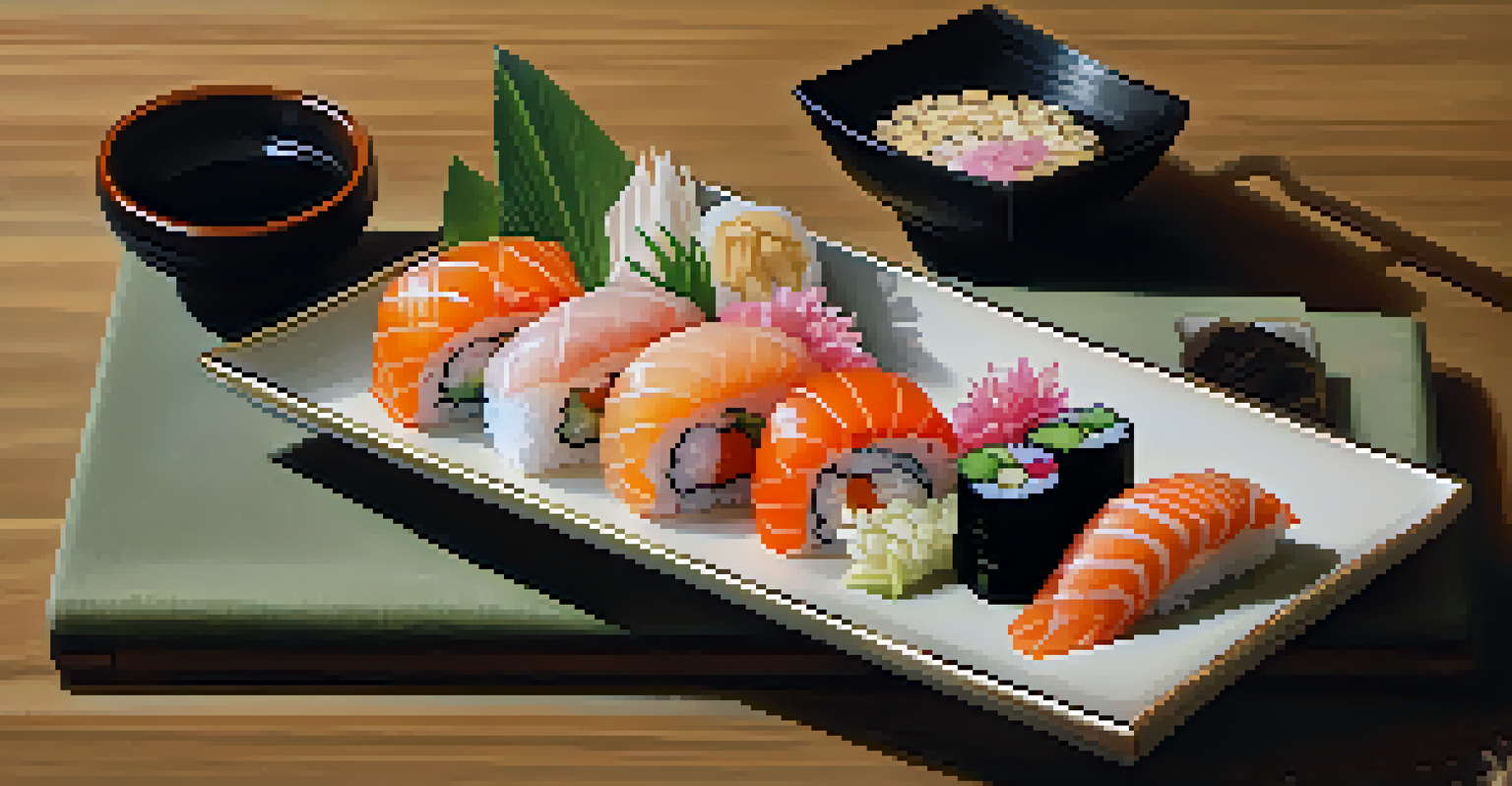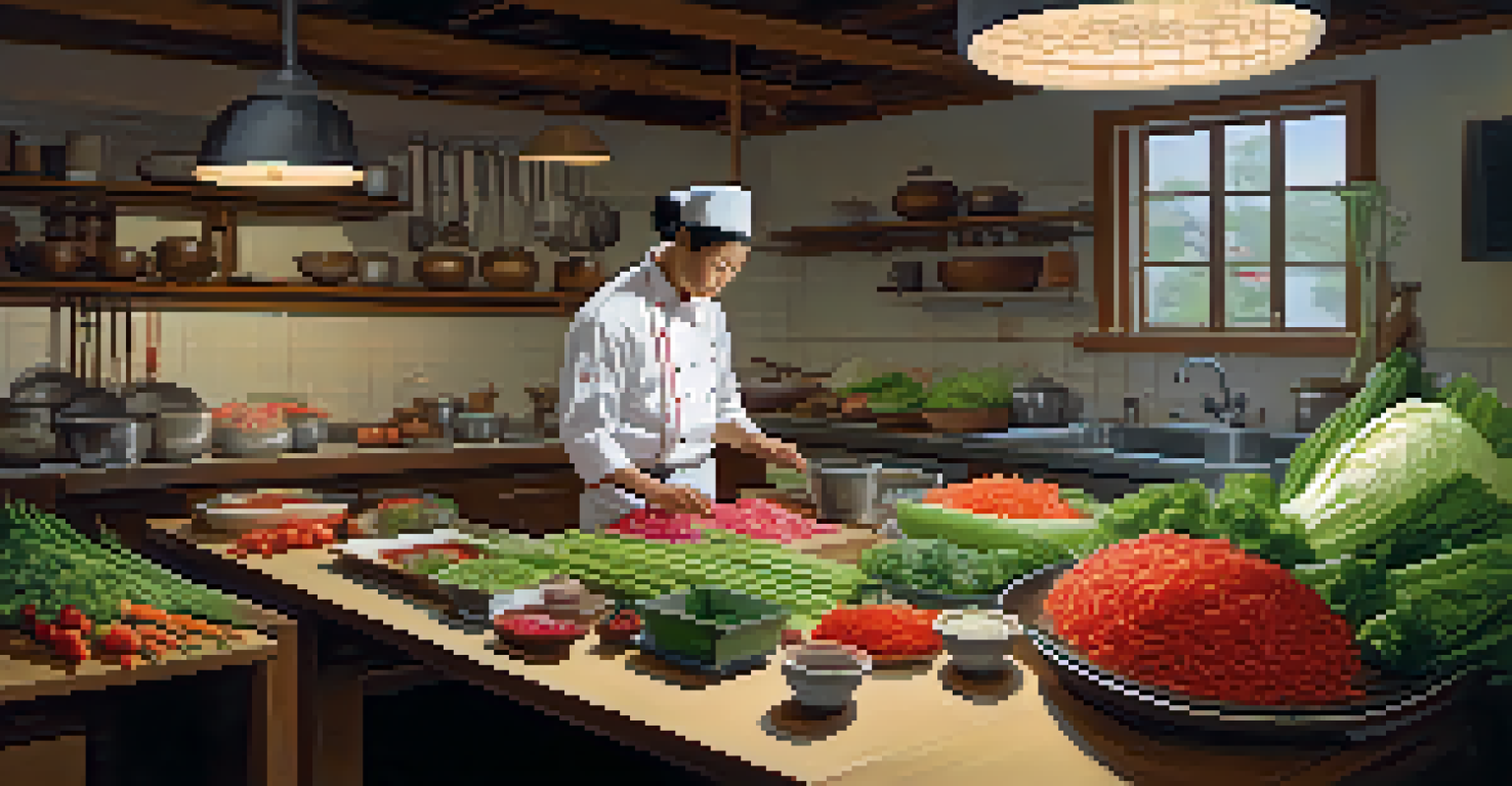Culinary Plants: How Food Shapes Cultural Identity Globally

The Heart of Culinary Identity: Understanding Food's Role
Food is more than sustenance; it's a reflection of our culture and identity. From the spices of India to the pasta of Italy, culinary traditions offer a window into the values, history, and geography of a community. When we share a meal, we share stories, beliefs, and heritage, creating connections that span generations.
Food is our common ground, a universal experience.
For example, consider the way sushi represents Japanese culture. Beyond the meticulous preparation and presentation, sushi embodies principles of seasonal eating and respect for ingredients. Each bite tells a story of the land, sea, and the people who cultivate these culinary practices.
In this way, food acts as a cultural narrative, illustrating how communities adapt their diets based on available resources and historical influences. This dynamic relationship between food and culture shapes our identities in profound and lasting ways.
Culinary Plants: Defining Borders and Belonging
Culinary plants often reflect the geography of a region, establishing a sense of belonging among its people. For instance, the use of corn in Mexican cuisine is not only a staple but also a symbol of cultural pride and tradition. It connects the people to their land and history, reinforcing a collective identity.

In contrast, globalization has blurred these geographical lines, introducing diverse culinary plants into new regions. While this fusion can lead to exciting innovations, it can also spark debates about cultural appropriation and authenticity. The challenge lies in balancing the appreciation of these culinary influences while respecting their origins.
Food Reflects Cultural Identity
Culinary traditions serve as a lens through which we can understand the values, history, and geography of different communities.
Ultimately, the way we embrace or resist these influences can shape our cultural identity. The choices we make in our kitchens can either reinforce a sense of belonging or create a mosaic of global flavors that celebrates diversity.
Rituals and Traditions: Culinary Practices as Cultural Markers
Food rituals and traditions play a pivotal role in defining cultural identity. Whether it's a family gathering during a festive season or a community feast, these practices create shared experiences that strengthen bonds. For example, the preparation of kimchi in Korea is not just about the food; it’s a communal activity that embodies family ties and cultural heritage.
The discovery of a new dish does more for the happiness of mankind than the discovery of a star.
These culinary practices often come with specific plants that hold significance within the culture. For instance, rice is central to many Asian cultures and is often used in rituals to symbolize prosperity and fertility. Such practices connect generations, ensuring that cultural identities are preserved and passed down.
Moreover, as people migrate, they carry these culinary traditions with them, adapting them to new environments. This blending of practices can enrich the cultural landscape, allowing for new interpretations while keeping the essence of the original traditions alive.
Food as a Symbol of Resistance and Resilience
Culinary plants can also serve as powerful symbols of resistance and resilience. Throughout history, oppressed communities have used food to assert their identity and preserve their culture. For example, the cultivation of indigenous crops in the Americas has been a form of resistance against colonial forces that sought to erase their heritage.
In contemporary society, movements like the Slow Food movement emphasize local and traditional foods as a way to combat globalization's homogenizing effects. By prioritizing native culinary plants, communities can reclaim their food sovereignty and celebrate their unique identities.
Globalization Challenges Authenticity
The blending of cuisines due to globalization raises important questions about preserving traditional culinary identities while embracing new influences.
These acts of culinary resistance not only nurture cultural identity but also promote sustainable practices. By valuing traditional agricultural methods and crops, communities can foster resilience in the face of economic and environmental challenges.
Globalization and the Evolution of Culinary Identity
Globalization has dramatically altered culinary landscapes, introducing a myriad of flavors and techniques from around the world. This blending of cuisines can lead to exciting culinary innovations, but it also raises questions about the preservation of traditional culinary identities. As cultures mingle, how do we maintain authenticity while embracing new influences?
Take the example of fusion cuisine, where chefs creatively combine elements from different culinary traditions. While it can lead to delicious results, such as Korean tacos, it can also dilute the essence of the original dishes. This creates a tension between innovation and respect for culinary heritage.
Navigating this culinary evolution requires a balance—a way to celebrate diversity without losing the roots of cultural identity. By honoring traditional practices while remaining open to new ideas, we can create a rich tapestry of global culinary heritage.
The Role of Culinary Education in Cultural Preservation
Culinary education plays a crucial role in preserving culinary identities. Schools and programs that focus on traditional cooking methods not only teach skills but also foster appreciation for cultural heritage. By understanding the history and significance of various culinary plants, students can carry forward these traditions.
For instance, programs that celebrate indigenous cuisines help to highlight the importance of native crops and cooking techniques. This education empowers future chefs to respect and honor the cultures they represent, ensuring that culinary identities are not lost in the face of modernization.
Culinary Education Preserves Heritage
Culinary education plays a vital role in maintaining cultural identities by teaching traditional cooking methods and fostering appreciation for diverse culinary practices.
Moreover, culinary education can serve as a platform for cultural exchange. As students from diverse backgrounds come together, they share their unique perspectives, enriching the learning experience and fostering a greater understanding of global culinary practices.
Celebrating Diversity: Culinary Events and Festivals
Culinary events and festivals offer a vibrant celebration of cultural identities through food. These gatherings not only showcase traditional dishes but also promote the culinary plants that are integral to different cultures. From food fairs to regional harvest festivals, these events create opportunities for communities to come together and share their culinary heritage.
For example, the annual Tomato Festival in Spain attracts visitors from around the world, celebrating the cultural significance of this fruit in Spanish cuisine. Such events highlight the importance of local ingredients and the traditions surrounding their use, fostering a sense of pride among participants.

Additionally, culinary festivals can serve as platforms for dialogue about food sustainability and cultural preservation. By bringing together chefs, farmers, and consumers, these events encourage conversations about the importance of supporting local agriculture and preserving culinary traditions for future generations.